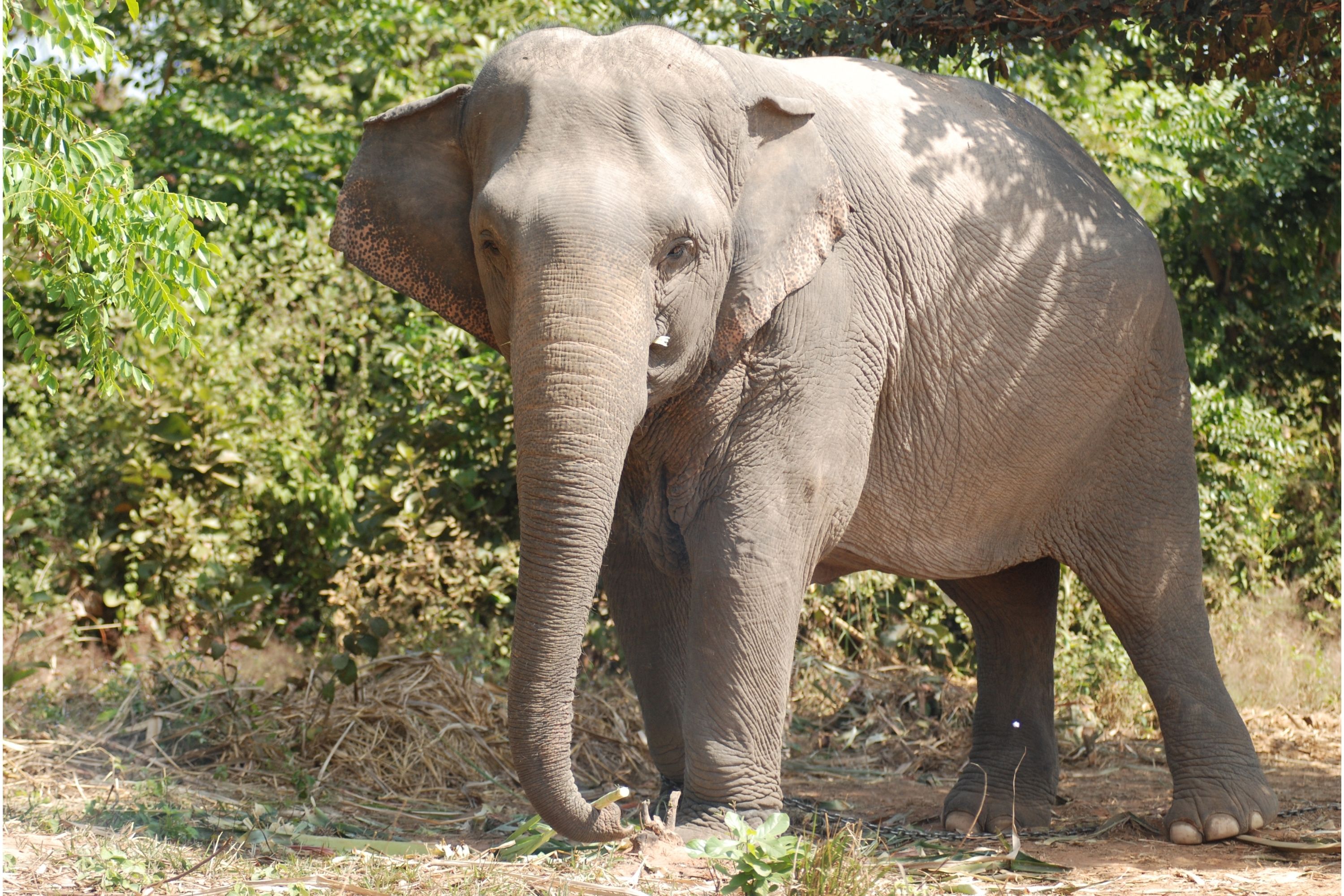Asian elephant
(Elephas maximus)

Description
The Asian elephant (Elephas maximus), also known as the Asiatic elephant, is the only living species of the genus Elephas and is distributed throughout the Indian subcontinent and Southeast Asia, from India in the west, Nepal in the north, Sumatra in the south, and to Borneo in the east. Three subspecies are recognised—E. m. maximus from Sri Lanka, E. m. indicus from mainland Asia and E. m. sumatranus from the island of Sumatra.It is one of only three living species of elephants or elephantids anywhere in the world, the others being the African bush elephant and African forest elephant. The genus Elephas originated in Sub-Saharan Africa during the Pliocene and spread throughout Africa before expanding into the southern half of Asia.The earliest indications of captive use of Asian elephants are engravings on seals of the Indus Valley Civilisation dated to the 3rd millennium BC. In general, the Asian elephant is smaller than the African bush elephant and has the highest body point on the head. The back is convex or level. The ears are small with dorsal borders folded laterally. It has up to 20 pairs of ribs and 34 caudal vertebrae. The feet have more nail-like structures than those of African elephants—five on each forefoot, and four on each hind foot.The forehead has two hemispherical bulges, unlike the flat front of the African elephants. Asian elephants inhabit grasslands, tropical evergreen forests, semi-evergreen forests, moist deciduous forests, dry deciduous forests and dry thorn forests, in addition to cultivated and secondary forests and scrublands. Over this range of habitat types elephants occur from sea level to over 3,000 m (9,800 ft). In the eastern Himalaya in northeast India, they regularly move up above 3,000 m (9,800 ft) in summer at a few sites. In China, the Asian elephant survives only in the prefectures of Xishuangbanna, Simao, and Lincang of southern Yunnan. Estimated population is around 300 individual (in 2020). In Bangladesh, some isolated populations survive in the south-east Chittagong Hills.A herd of 20–25 wild elephants was reported as being present in the Garo Hills of Mymensingh in the late-1990s, being detached from a big herd in the Peack hills of India and prevented from returning by fences put up in the meantime by the Indian border security force. The herd was estimated at about 60 individuals in 2014
Taxonomic tree:







